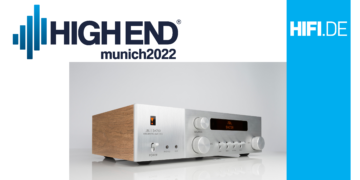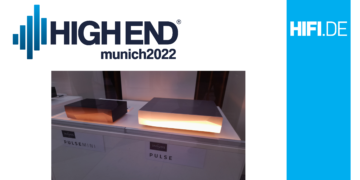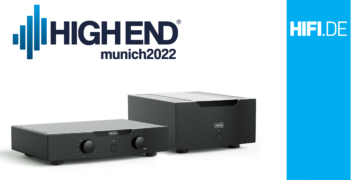| HIFI-FORUM » Akustik » Akustik » Nachhall messen - wie war das nochmal. | |
|
|
||||
Nachhall messen - wie war das nochmal.+A -A |
||
| Autor |
| |
|
larola
Stammgast |
#1
erstellt: 28. Jul 2022, 09:03

|
|
|
Hallo zusammen, Ich möchte den Nachhall in meinem 12qm großen Raum messen. Würde ich mit Rew oder Carma machen. Mikro ist Umik1. Ich würde das mikro nach oben ausrichten, inkl. Kalibrierungsdatei, im Gegensatz zu sonstigen Messungen. Mir war so, als könne man den Nachhall in "kleinen" Räumen nicht "sauber belegbar" ermitteln. Stimmt dass.? Vielen Dank für eure Antworten. Larola |
||
|
Acoustics_Fun
Ist häufiger hier |
#2
erstellt: 28. Jul 2022, 11:27

|
|
|
Hi, Doch über Wasserfall und Spektrogram lässt sich das bestimmen. RT60 macht in akustisch kleinen Räumen keinen Sinn, weil es dafür ein diffuses Schallfeld braucht, das gibt es da aber nicht. |
||
|
|
||
|
GAREA
Inventar |
#3
erstellt: 28. Jul 2022, 11:34

|
|
|
Mehr Infos hier:  https://www.roomeqwizard.com/help/help_en-GB/html/graph_rt60.html. https://www.roomeqwizard.com/help/help_en-GB/html/graph_rt60.html.Wie gesagt, nimm das WF-Diagramm oder Spectrogramm. |
||
|
larola
Stammgast |
#4
erstellt: 28. Jul 2022, 12:33

|
|
|
...okay,danke für eure Antworten. So mache ich es... Gruß Larola |
||
|
quecksel
Inventar |
#5
erstellt: 29. Jul 2022, 10:05

|
|
Warum sollte es dafür ein diffuses Schallfeld brauchen? |
||
|
Acoustics_Fun
Ist häufiger hier |
#6
erstellt: 29. Jul 2022, 10:38

|
|
|
Weil in akustisch kleinen Räumen die Raumantwort von modaler Resonanz dominiert wird.  https://www.roomeqwizard.com/help/help_en-GB/html/graph_rt60.html https://www.roomeqwizard.com/help/help_en-GB/html/graph_rt60.htmlGibt aber noch deutlich detaillierte Beschreibungen im Netz dazu. Das deckt sich auch mit den Erfahrungen in der Praxis. |
||
|
GAREA
Inventar |
#7
erstellt: 29. Jul 2022, 10:40

|
|
|
Weil das eine Grundannahme für die RT60-Berechnungen ist: “RT60 is a measure of how long sound takes to decay by 60 dB in a space that has a diffuse soundfield, meaning a room large enough that reflections from the source reach the mic from all directions at the same level. Domestic rooms are usually too small to have anything approaching a diffuse field at low frequencies as their behaviour in that region is dominated by modal resonances. As a result RT60 is typically not meaningful in such rooms below a few hundred Hz. Use the RT60 Decay, waterfall, spectrogram and Decay plots to examine the decay of low frequencies in domestically-sized rooms. […] The RT60 values are estimated by calculating the slope of the Schroeder curve, which is a plot of the energy (squared values) of the impulse response that is backwards integrated (summed starting from the end and moving backwards). The vertical axis of the plot is in dB. The different RT60 measures (e.g. T20, T30, REW's Topt) are derived by calculating the slope of a best fit line to the Schroeder curve over different ranges (detailed below). In a diffuse field the curve with the dB vertical scale is quite linear until it reaches the noise floor. The start point for the classical T20 and T30 measures of RT60 is where the Schroeder curve has dropped 5 dB below its peak. That works well in the large spaces for which RT60 is most applicable, particularly if the source used for the measurement is omnidirectional. In domestically sized rooms using normal, directional loudspeakers as sources the initial drop of the Schroeder curve is quite sharp (the Early Decay Time is quite short) meaning the -5 dB point lies within the early decay region rather than the diffuse field region. That in turn means the T20 and T30 figures underestimate the RT60 time. Where the EDT is much shorter than the T30 RT60 figure REW's Topt RT60 calculation uses a start point based on the intersection of the EDT and T30 regression lines, to determine a point that lies within the diffuse field region. It then tests each possible end point in 1 dB steps and picks the one that gives a regression line with the best linear fit. That produces a more reliable RT60 figure.“ Quelle: siehe Link oben. |
||
| ||
|
|
||||
| Das könnte Dich auch interessieren: |
|
Nachhall messen? altesOhr49 am 14.01.2016 – Letzte Antwort am 17.01.2016 – 12 Beiträge |
|
Raumakustik Nachhall selber messen ? Richi666- am 20.01.2023 – Letzte Antwort am 22.01.2023 – 10 Beiträge |
|
Nachhall und Raumakustik messen. TKCologne am 22.11.2013 – Letzte Antwort am 22.11.2013 – 5 Beiträge |
|
Nachhall eines Raumes messen APP DEKRA am 08.10.2020 – Letzte Antwort am 13.10.2022 – 4 Beiträge |
|
Nachhall Dr.Flx am 04.09.2005 – Letzte Antwort am 06.09.2005 – 7 Beiträge |
|
Raum Nachhall messen für verschiedene Frequenzen. Welche SW? Christine85 am 19.05.2020 – Letzte Antwort am 20.05.2020 – 15 Beiträge |
|
"Metallischer Nachhall" Schallfee am 10.01.2014 – Letzte Antwort am 14.01.2014 – 5 Beiträge |
|
Interpretation Nachhall No am 29.12.2015 – Letzte Antwort am 31.12.2015 – 11 Beiträge |
|
Nachhall mit Basotec reduzieren Leli196 am 19.02.2017 – Letzte Antwort am 20.02.2017 – 9 Beiträge |
|
Raummoden von Wohnzimmer messen GAM3L3DER am 10.05.2020 – Letzte Antwort am 16.05.2020 – 26 Beiträge |
Foren Archiv
2022
Anzeige
Top Produkte in Akustik

Aktuelle Aktion
Top 10 Threads in Akustik der letzten 7 Tage

- Hochfrequenztöne nachweisen
- Hilfe gesucht Brummton aus Nachbarwohnung zu ermitteln
- Schalldämmung gegen niederfrequentes Brummen // Infraschall // LKW-Motoren // Hilfe!
- Schalldämmung, Rigips oder Spanplatten?
- Hilft Basotec direkt hinter den LS?
- Wieviel Nachhall ist sinnvoll ?
- Low-Budget Deckensegel
- dB-Messung Lärm Poolumpe Aussenbereich
- Schallschutz im Reihenhaus
- DIY Akustikbild - Welchen Akustikstoff? Wo bestellen? Wo bedrucken lassen?
Top 10 Threads in Akustik der letzten 50 Tage

- Hochfrequenztöne nachweisen
- Hilfe gesucht Brummton aus Nachbarwohnung zu ermitteln
- Schalldämmung gegen niederfrequentes Brummen // Infraschall // LKW-Motoren // Hilfe!
- Schalldämmung, Rigips oder Spanplatten?
- Hilft Basotec direkt hinter den LS?
- Wieviel Nachhall ist sinnvoll ?
- Low-Budget Deckensegel
- dB-Messung Lärm Poolumpe Aussenbereich
- Schallschutz im Reihenhaus
- DIY Akustikbild - Welchen Akustikstoff? Wo bestellen? Wo bedrucken lassen?
Top 10 Suchanfragen

Forumsstatistik

- Registrierte Mitglieder928.949 ( Heute: 6 )
- Neuestes MitgliedAsdemna
- Gesamtzahl an Themen1.559.373
- Gesamtzahl an Beiträgen21.724.840














